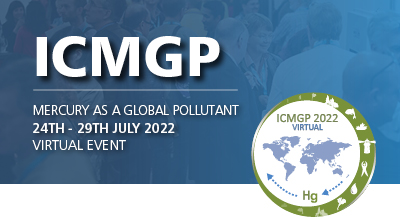| Abstract Title: | Effects of Suspended Particulate Matter on Photo-reduction of Mercury(II) in Everglades Water |
| Presenter Name: | Kang Wang |
| Company/Institution: | Department of Chemistry & Biochemistry, Florida International University |
| Session: | Mercury in Freshwater Ecosystems |
| Day and Session: | Monday 25th July - Session Three |
| Start Time: | 11:30 UTC |
| Co-Authors: | Kang Wang,Guangliang Liu,Yong Cai |
Abstract Information :
Photo-reduction of mercury (Hg) in waters plays an important role in the biogeochemical cycle of Hg in environments. Most of the previous studies on photo-reduction of Hg(II) have focused on dissolved Hg species, whereas few studies have looked at the effects of particles on photo-reduction of Hg(II). In the few studies, suspended particulate matter (SPM) is generally considered inhibiting photo-reduction of Hg(II) by attenuating irradiation through light absorption and scattering. However, isotopic fractionation evidence and occurrence of aqueous particulate Hg(0) suggest that SPM may play a more direct role in Hg photo-reduction. By using incubation experiments with Everglades waters and additions of isotopically labelled Hg(II), we studied the effects of SPM on photo-reduction of Hg(II) in natural waters. The effect of SPM on Hg(II) photo-reduction was not observed between filtered or unfiltered Everglades waters, probably because of the low concentrations of SPM (< 3 mg/L). When SPM isolated from original water was used to amend SPM concentration to 6.9 times the ambient water in southern Everglades, photoreduction of Hg(II) was significantly enhanced. Given that the SPM in Everglades waters are often semiconducting in nature, particulate Hg(II) may undergo heterogenous photo-reduction and lead to higher Hg(II) photo-reduction. However, in northern Everglades waters with both SPM and settling particles, high concentrations (~100 mg/L) of particles did not result in enhanced Hg(II) photo-reduction. In this case, the enhancing effects particles on Hg(II) photo-reduction were likely offset by inhibiting effects due to the higher irradiation attenuation and lower Hg(II) partition coefficients of the settling particles with larger sizes. This study highlights the direct involvements of particles in photoreaction of Hg species in natural waters and calls for more mechanistic research on heterogenous photoreduction of Hg species on particle surface.



